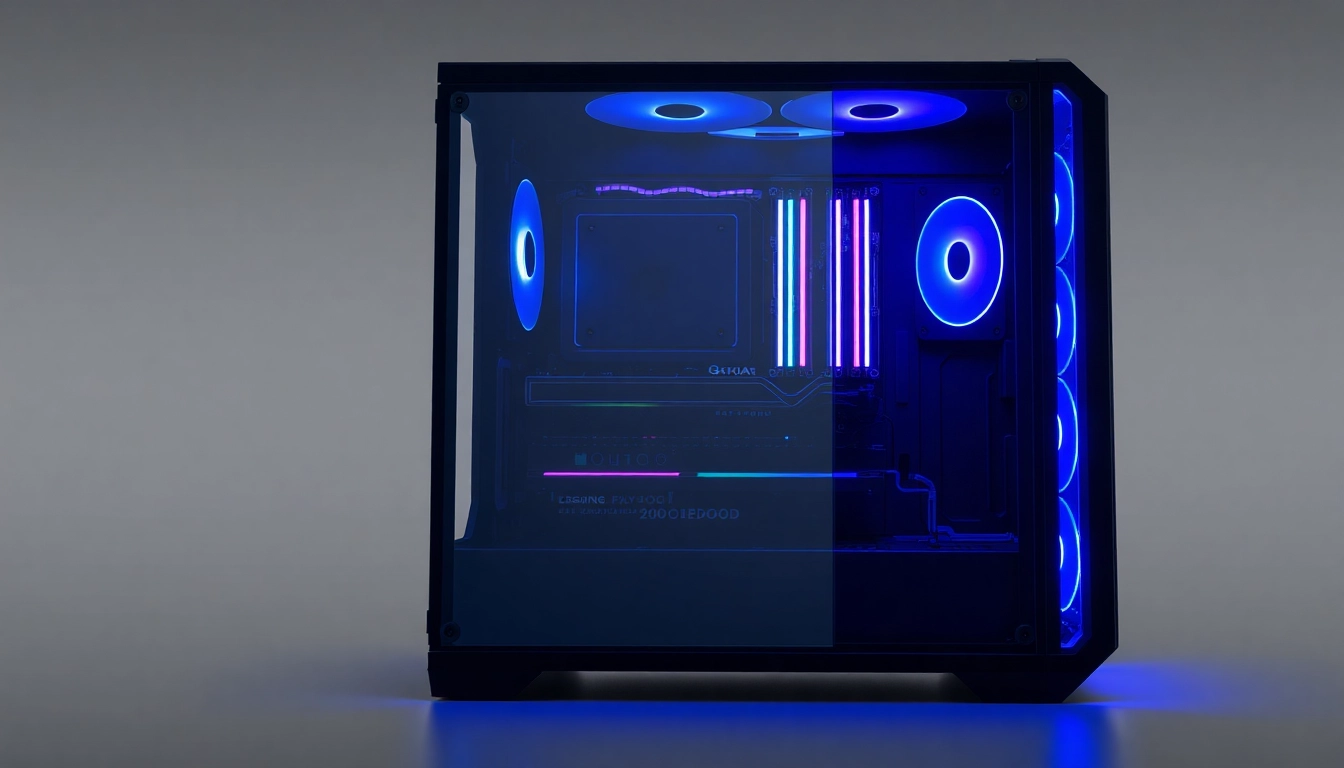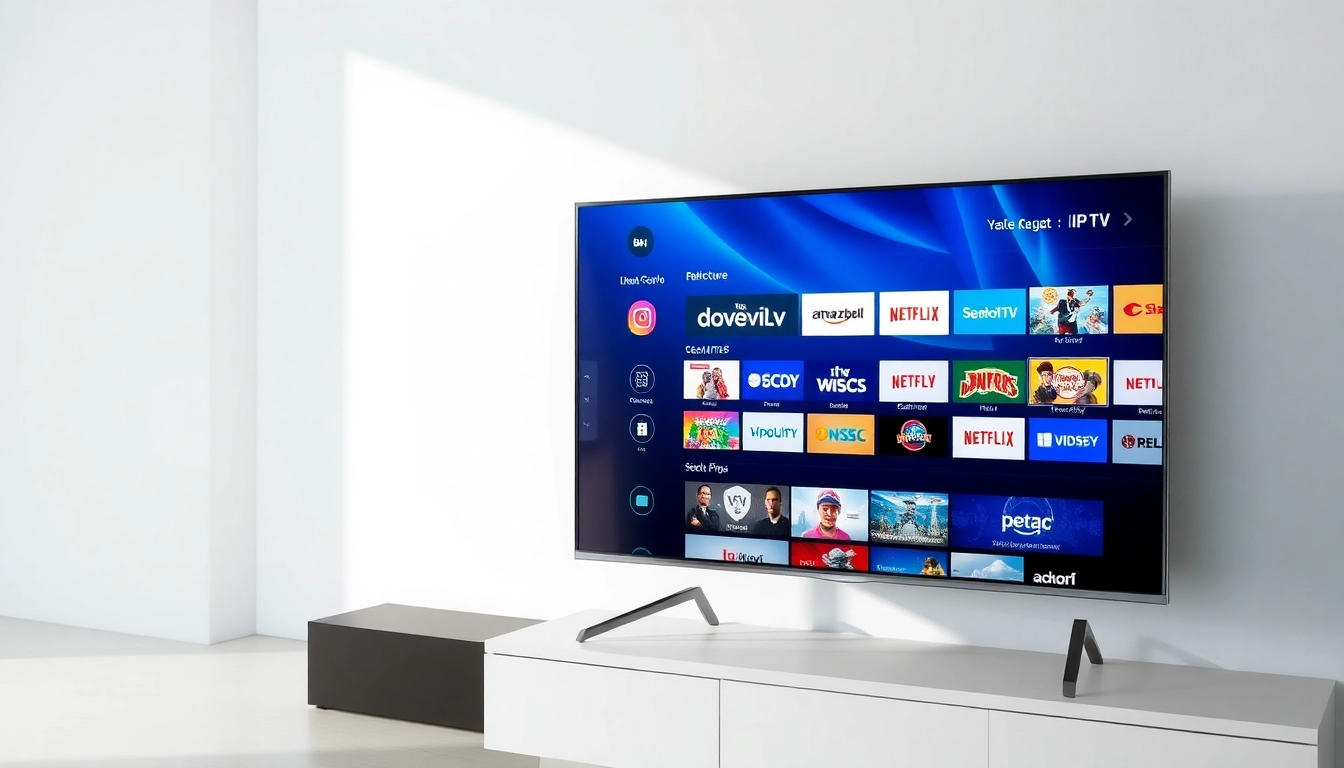Understanding Types of Gaming PC Cases
When it comes to assembling a gaming rig, choosing the right gaming pc case is integral to not only aesthetics but also functionality. Gaming PC cases come in various shapes and sizes, each designed to accommodate specific needs and preferences. In this section, we will explore the primary types of gaming PC cases, helping you determine which best suits your requirements.
ATX vs. MicroATX: What’s Right for Your Build?
The terms ATX and MicroATX refer to form factors that define the size and layout of the motherboard. ATX cases are typically larger, providing more space for additional components. MicroATX, on the other hand, is a more compact option that is well-suited for smaller builds but may limit expansion opportunities.
- ATX Cases: These are designed to accommodate full-size ATX motherboards, offering ample space for multiple GPU installations, additional cooling solutions, and extensive cable management options. They often have more drive bays compared to their MicroATX counterparts.
- MicroATX Cases: Perfect for users looking to save space without sacrificing too much functionality. While they still allow for decent cooling options and a couple of expansion slots, they might not have as many features as larger cases.
Full Tower vs. Mid Tower: Size Matters
Size is a significant consideration when selecting a gaming PC case. Full towers are massive and cater to advanced gaming needs, providing substantial room for hardware configurations, extensive cooling systems, and custom components. Mid-tower cases, while smaller, still offer enough room for most builds without taking up too much space in your setup.
- Full Tower Cases: Ideal for high-end gaming setups where airflow and space for multiple components are paramount. They often feature multiple fan mounting locations, extensive cable management options, and compatibility for larger cooling solutions.
- Mid Tower Cases: These cases strike an excellent balance between size and functionality, accommodating a standard ATX motherboard while remaining unobtrusive in smaller setups. They provide sufficient expansion options for most gamers without overwhelming the available space.
Best Materials for Gaming PC Cases
The material used in a gaming PC case has a direct impact on durability, weight, and thermal efficiency. High-quality materials can enhance the performance and longevity of your build. Here’s a look at some of the best materials used in gaming cases:
- Steel: Commonly used for its robustness and durability. Steel cases can withstand more wear and tear, making them a preferred choice for long-term use.
- Aluminum: This lightweight material offers good heat dissipation properties and a sleek aesthetic. However, aluminum cases tend to be more expensive and may scratch more easily.
- Tempered Glass: Increasingly popular for aesthetic reasons, tempered glass panels provide visibility into the internals of your build, perfect for showcasing RGB lighting. They may require careful handling as they are prone to breakage.
Key Features to Look for in a Gaming PC Case
Once you’ve identified the type of gaming PC case that fits your needs, the next step is evaluating the features that will enhance your overall gaming experience. A well-designed case should address performance, aesthetics, and future-proofing considerations.
Airflow and Cooling Solutions for Optimal Performance
Optimal cooling is crucial for maintaining performance and reliability in gaming PCs. Your case should support efficient airflow configurations:
- Fan Mounting Locations: Cases should have multiple mounting points for fans to ensure sufficient airflow across critical components such as the CPU and GPU.
- Water Cooling Support: For hardcore gamers, the option to install water cooling radiators is a significant advantage. Look for cases that support multiple radiator sizes.
- Ventilation Designs: Cases with mesh panels can enhance airflow efficiency. Ensure the case includes dust filters to keep components clean.
Cable Management: Keeping Your Setup Neat
A cluttered interior can impair airflow and make maintenance more complicated. Good cable management features are vital:
- Dedicated Routing Channels: Cases should offer channels and cutouts for efficient cable routing, minimizing clutter.
- Velcro Straps or Tie Points: These are essential for securing cables and making it easier to replace components without causing a tangled mess.
Expansion Options for Future Upgrades
The ability to upgrade your system is key to extending the life of your gaming PC. Therefore, consider the following features:
- Drive Bays: Ensure the case supports ample drive bays for both SSDs and HDDs, especially if you plan to expand storage.
- PCIe Slots: The number of available PCIe slots will determine how many graphics cards or expansion cards you can install.
Top Gaming PC Case Brands Reviewed
When selecting a gaming PC case, it’s important to look at reputable brands known for quality and performance. Here are a few highly regarded brands that consistently offer outstanding gaming cases:
CORSAR: Innovation Meets Functionality
Corsair is widely recognized for its innovative designs and quality features. Corsair cases typically emphasize cooling, with numerous fan and radiator mounting capabilities. The cases often include RGB lighting options that appeal to gamers who want to enhance the aesthetics of their rig. Models such as the Corsair 4000D and 5000D deliver excellent airflow and cable management.
NZXT: Style Without Compromise
NZXT is synonymous with modern aesthetics and thoughtful designs tailored to gamers. The H-series cases, like the H510, feature a sleek, minimalist design with solid construction, easy cable management options, and extensive cooling support. NZXT emphasizes user-friendliness in assembly, appealing to both novice and experienced builders.
Thermaltake: Blending Performance with Aesthetics
Thermaltake offers a wide range of cases that cater to various needs, from budget-friendly options to high-end configurations. Their cases often feature unique designs, ample space for water cooling, and customizable RGB lighting. The View series cases are particularly popular for their tempered glass panels and overall aesthetic appeal, making them a staple for gamers looking to showcase their builds.
How to Build Your Gaming PC in the Right Case
Building a gaming PC can be a rewarding experience that allows for complete customization. Proper assembly in a well-chosen case sets the foundation for optimal performance.
Step-by-Step Assembly Tips
Follow these steps to ensure a smooth build process:
- Gather Your Components: Collect all necessary parts, including motherboard, GPU, CPU, RAM, storage, cooling solutions, and the chosen PC case.
- Install the Power Supply: Begin by installing the power supply in its designated area, ensuring proper cable routing for a clean setup.
- Attach the Motherboard: Before placing the motherboard in the case, install the CPU, RAM, and cooler to simplify the building process.
- Install the HDD/SSD: Place the storage devices in the appropriate bays and secure them with screws or clips.
- Install the GPU: Insert the graphics card into the primary PCIe slot and secure it firmly.
- Connect All Cables: Ensure all power cables are connected to the motherboard and other components, keeping them organized to promote airflow.
- Final Checks: Before closing the case, double-check all connections and ensure everything is secured correctly.
Cooling Configuration Strategies
Efficient cooling is pivotal in a gaming build. Here are strategies to achieve optimal temperatures:
- Fans Placement: Position intake fans at the front and bottom of the case, while exhaust fans should be set at the rear and top to promote better airflow.
- Monitor Temperatures: Utilize monitoring software to keep track of component temperatures during gaming sessions, making adjustments to fan speeds as necessary.
- Consider Liquid Cooling: If you have rigorous overclocking plans or high-performance components, consider installing a liquid cooling solution for enhanced heat dissipation.
Testing and Maintaining Your Gaming PC
Once your gaming PC is built, it’s essential to perform routine testing and maintenance to ensure long-lasting performance:
- Stress Testing: Use tools like Prime95 or FurMark to stress-test your system after assembly. This helps identify potential overheating or stability issues.
- Regular Cleaning: Periodically clean fans, filters, and other components to prevent dust buildup that can hinder airflow and performance.
- Software Maintenance: Keep your drivers and system BIOS updated to ensure compatibility and efficiency.
Accessories to Enhance Your Gaming PC Case
Your build doesn’t end with just the case and components. Several accessories can enhance your setup, both functionally and visually.
LED Lighting Solutions for a Custom Look
Many gamers opt for LED lighting to personalize their builds. Consider:
- RGB Fans: Fans that come with RGB lighting can sync with your motherboard, adding vibrant colors and animations to your rig.
- LED Strips: Adding LED strips inside your case can illuminate components and create a dramatic look, especially with glass panels.
- Lighting Controls: Look for cases that include built-in controls or compatibility with motherboard software to easily adjust lighting preferences.
Fans and Cooling Systems to Boost Performance
Cooling is essential not only for performance but also for the longevity of your components:
- Aftermarket Fans: Investing in high-quality aftermarket fans can improve cooling performance, particularly in cases with restricted airflow designs.
- Radiators and Water Cooling Kits: Upgrading to a liquid cooling setup can prevent thermal throttling during intense gaming sessions.
Custom Panels and Aesthetic Upgrades
Customization can extend beyond simple RGB lighting:
- Custom Paint Jobs: Consider painting your case for a unique look that reflects your personal style.
- Windowed Panels: Some cases allow you to swap out stock panels for tempered glass versions, elevating visual appeal.
Ultimately, selecting the right gaming PC case involves understanding not just the types available, but also the features that will enhance your gaming experience. By factoring in your gaming needs, aesthetic preferences, and practical considerations, you can choose a case that not only complements your rig but enhances its performance for ultimate gaming sessions.



